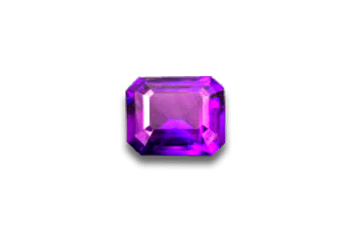AMETHYST
Amethyst is a purple variety of one of the most common minerals in the earth-quartz! Other well-known varieties are citrine, tiger's eye and rose quartz. Pure quartz is colorless and is composed of silicon and oxygen. If trace amounts of iron and slight atomic irregularities are present, purple will result. The finest quality material is a dark, saturated purple with red highlights. The best quality came from Siberia. Unfortunately, these mines are now inactive. However, other countries in South America and Africa can produce fine material as well. Because zones of lighter and darker color are typical and well-matched collections of amethyst are difficult to assemble, lab-grown stones have become common, beginning in the 1970's. Very dark amethyst is often heated to lighten its color. This treatment relates to a durability characteristic. Strong heat may change amethyst's color, making it yellow, green or colorless. Even bright light may cause this gem to fade. However, amethyst is reasonably hard (7 on the Moh's scale) and tough. When cleaning, the ultrasonic is usually safe while steam cleaning may pose a risk.

Image Above: Amethyst is the February birthstone and the 6th wedding anniversary stone, in part due to its long history. It was prized by the ancient Greeks whose language is the source of the gem's name. "Amethystos" means "not to intoxicate" because amethyst was thought to protect against drunkenness. It was also credited with banishing evil spirits and guarding against snake and insect bites. It has been a favored stone of bishops and cardinals and in the 1700s, Queen Charlotte, wife of King George III of England, owned a famous amethyst bracelet worth 2000 pounds at the time.

